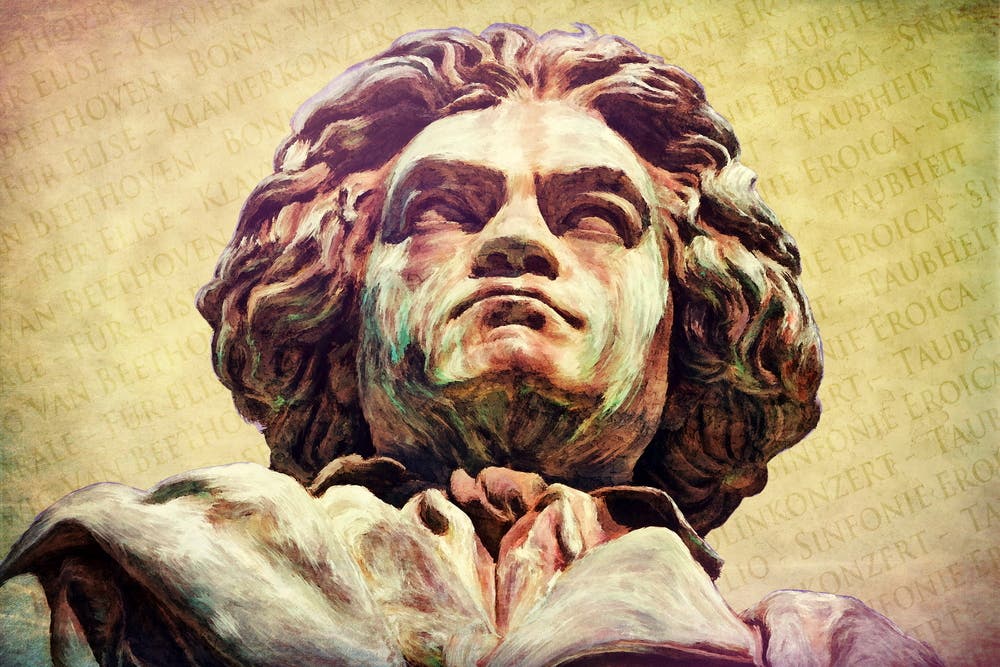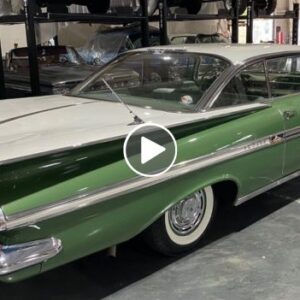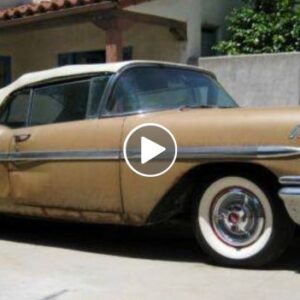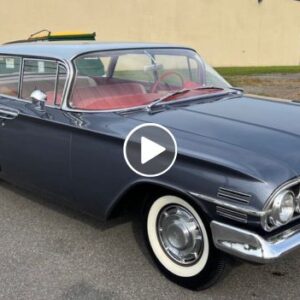Symphony No. 5 in C minor Op. 67 “Fate” was composed by Beethoven in the period 1804-1808, and is one of the most famous and popular symphonies in the history of classical music.

Creative process
Symphony No. 5 had a long gestation period. The first sketches for it were begun by Beethoven in 1804 immediately after he completed Symphony No. 3. However, the process of composing this work was interrupted by preparations for other works. others include the opera Fidelio, the piano sonata Appassionata, the three Razumovsky pieces for string quartet, the Violin Concerto, the Fourth Symphony and the Mass in C major. It was not until 1807 that Beethoven was able to return to composing the 5th symphony and completed it in 1808. It was performed in parallel with the 6th symphony and both symphonies were performed in 1808. same day.
Beethoven completed the Fifth Symphony in his mid-thirties when his life was troubled by increasingly severe deafness. The world historical context at that time was marked by Napoleon’s wars, political riots in Austria, and the occupation of the capital Vienna by Napoleon’s army in 1805.
Chapter 1: Allegro con brio
The first movement opens with a four-note motif, one of the most famous motifs in Western music. There is quite a bit of debate among conductors about the rhythm in which to play these four opening notes. Some conductors strictly follow the allegro rhythm (a fast tempo of about 120-168 beats per minute); Others, to emphasize the heaviness of the fateful knock, play the opening four notes in a very slow and solemn rhythm; Others play in molto ritardando (playing each four-note beat gradually), assuming that the rest on the fourth note plays a balancing role. Some critics emphasize that it is important to capture the spirit of the two-one rhythm and argue that the one-two-three-four rhythm is often played incorrectly.
The first movement is written in the traditional sonata form that Beethoven inherited from his predecessors, classical composers Haydn and Mozart (in which the main idea is expressed right from the first pages and continues to be pushed and developed. over many notes, with a dramatic repetition of the opening phrase – the summary mark – three-quarters of the way through the entire movement). It begins with two powerful dramatic passages, a famous motif intended to attract the audience’s attention. Following the first four bars, Beethoven uses repetition and continuity to develop the theme. Four short notes that repeat like buckets on top of each other at a steady tempo create a single, continuously flowing melody. Immediately afterwards, a bridge played on the horn with a fast, strong resonance takes its place before the second theme is introduced. This second theme is played in E flat, the major equivalent, and is more lyrical, written for piano and with four-note motifs played accompaniment by the bows. The reprise is again based on the four-note motif. The development of the segment continues to use inflections, continuations and repetitions, and bridges. In this repetition, there is a short solo for oboe in an almost improvisatory style, and the entire first movement ends with an intense coda.
Chapter 2: Adante con moto
Movement 2, played in A major, is deeply lyrical in the form of a double variation theme, meaning two themes appear at the same time and change alternately. The variations are followed by a long coda.
This movement opens with the introduction of the first theme, a melody played in unison by viola and cello with accompanying double bass. The second theme is immediately followed by harmony created by clarinet, basson, and violin, with three-note dissonance for viola and bass. In the next variation the first theme reappears and is followed by a third theme, 32 notes played by viola and cello with a counter-part played by flute, oboe and basson. A transition follows with the entire orchestra joining in with a powerful rhythm, leading to a gradually increasing climax, and a coda to end the movement.
Chapter 3: Scherzo. Allegro
The third movement has a three-layer structure, consisting of a scherzo and trio written in the pattern of the third movement of a Classical period symphony, in which the main scherzo section is played in succession, then a contrasting trio section, and then the third movement. The scherzo will repeat, and the coda will end. However, while Classical symphonic music commonly used minuet and trio for the third movement, Beethoven innovated by using scherzo and trio structures.
This third movement returns to the C minor key in the opening and begins with a theme played by cello and double.
The opening theme is answered by a contrasting theme played on wind instruments, and this passage is repeated. Then the horn speaks strongly to declare the main theme of the movement and the music develops from here.
The trio part is played in C major and is written in counterpoint. When the scherzo returns for the final time, it is played with very gentle strings and a pizzicato technique.
“The scherzo section creates an opposition similar to slow melodies in that they develop from the extremely different characteristics between the scherzo and the trio… The scherzo contrasts this image with the famous (3+1) motif of the movement first, which is decisive throughout the entire chapter.
Chapter 4: Allegro
The joyful and exuberant tone of the concluding movement immediately follows the scherzo without interruption. It is written in an unusual variant sonata form: at the end of the thematic development, the instruments pause on the dominant beat, playing strongly, and the music continues after the pause with a gentle refrain. of the “horn theme” in the scherzo. The summary is then introduced by a rising rhythm from the final bars of the added scherzo, identical to the music of the opening movement. Inserting the intermission into the final movement with material from this third ‘dance’ was first used by Haydn in his Symphony No. 46 in B in 1977. No one knows whether Beethoven learned from work on this part or not.
The final movement of the Fifth Symphony ends with a very long coda, in which the main themes of the movement are played in a rhythmically condensed form. Towards the end, the rhythm gradually changes to presto (very fast). The symphony ends with 29 bars in a C major chord, played extremely strongly. Charles Rosen in The Classical Style[18] argues that this ending reflects Beethoven’s sense of commercialism in Classical music: the “incredibly long ending” entirely in C major is necessary “to conclude the extreme tension of this monumental work.”
| Ludwig van Beethoven (December 17, 1770 – March 26, 1827) was a German classical composer. Most of the time he lived in Vienna, Austria. He was an important musical figure during the transition period from the classical music period to the romantic music period. He can be considered the Wegbereiter of the Romantic music period. Beethoven is widely recognized as the greatest, most famous composer and has influenced many later composers, musicians, and audiences. |





